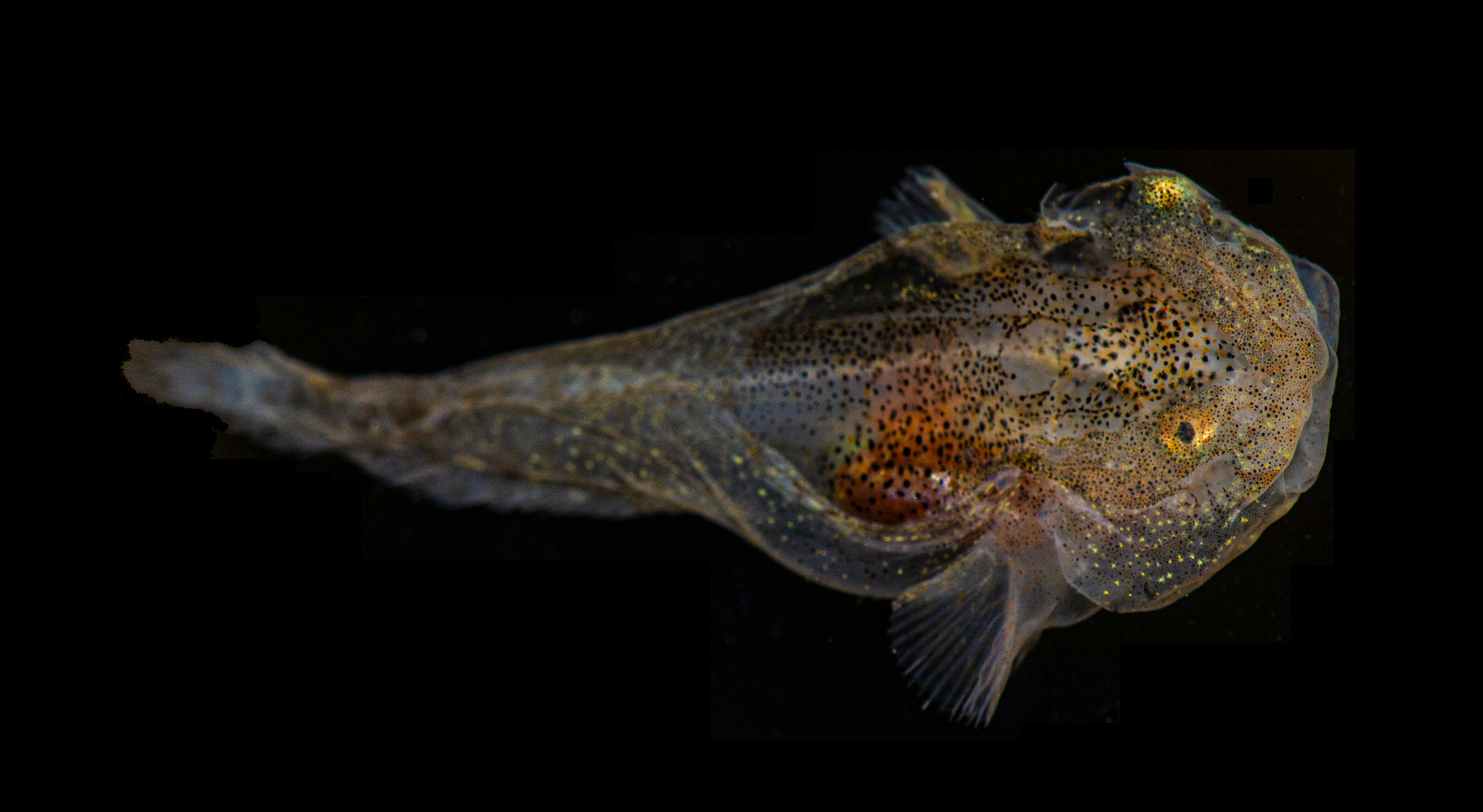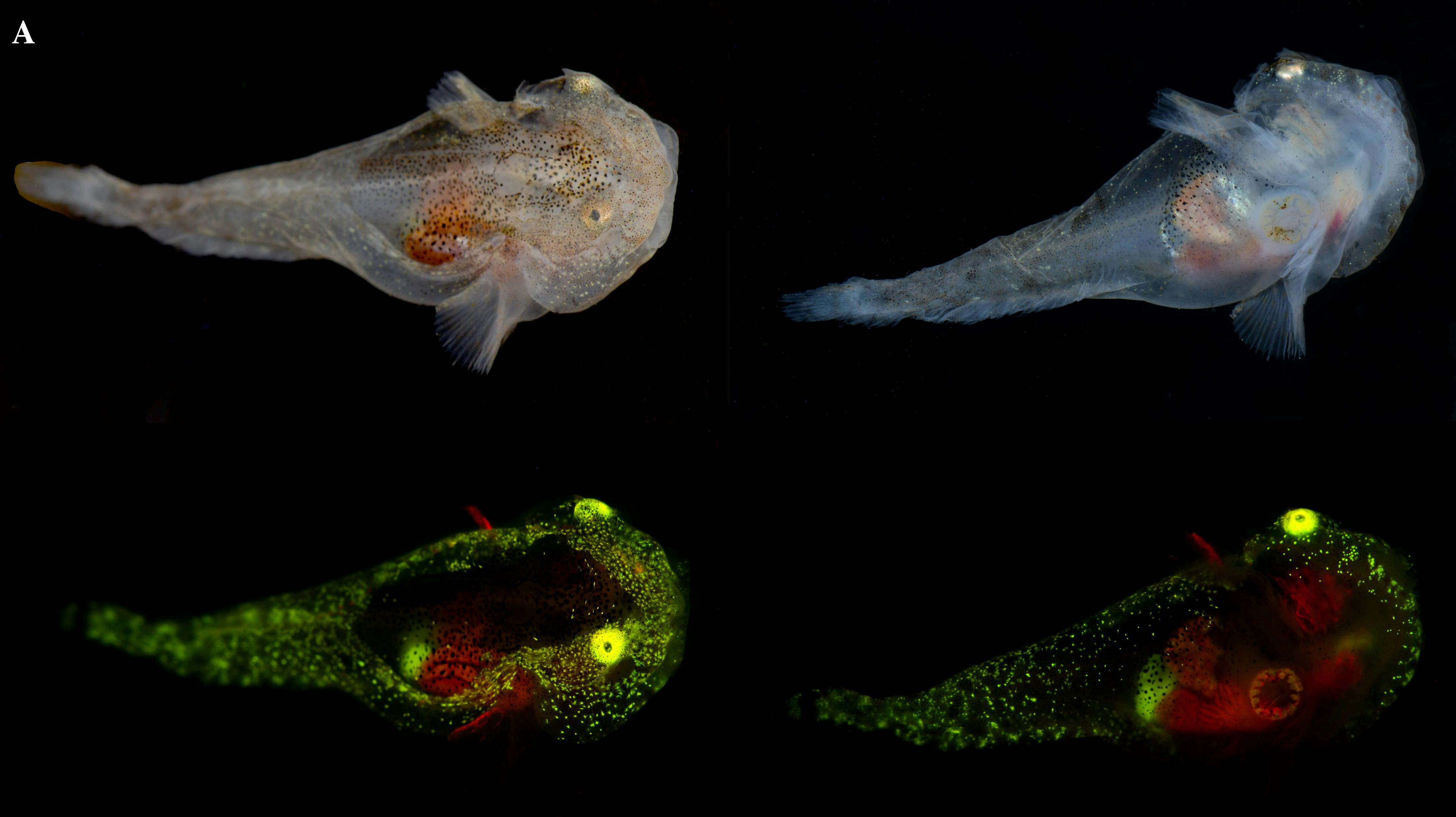
Flight, camouflage, and super speed are just a few skills that would be science fiction for humans but natural for many other creatures on Earth. For the snailfish dwelling in Arctic waters, their power is the ability to withstand water temperatures of nearly -2 degrees Celsius.
That superpower isn’t what initially drew marine biologist David Gruber to an iceberg in Eastern Greenland, however. In August 2019, Gruber and his team traveled to the area to study how prolonged light and darkness could affect biofluorescent snailfish, another superpower of theirs.
But on the expedition, they found just a few juvenile Liparis gibbus on the iceberg. Still, they got more than they bargained for.
While the biologists found what they set out for, they also learned more about the biological mechanisms that permits snailfish to live comfortably in the frigid waters. In a paper published today in the journal Evolutionary Bioinformatics, the hard work behind this snailfish’s other superpower is revealed.
What’s new — Researchers already knew that snailfish produce a substance known as the antifreeze protein. The animals pump this protein into their bloodstream, and there, it interferes with ice crystal formation in the blood. The protein sticks to smaller ice crystals, which prevents them from binding to one another and growing bigger. The result is a sort of gel that can’t freeze.
It turns out that not only can juvenile snailfish produce this antifreeze protein, but it’s one of the hardest working parts of their genome. While researchers have known about this protein in other creatures like notothenioid fish and Atlantic herring since the 1960s, Gruber and his team are among the first to underscore just how much of it these 18-millimeter fish churn out.
“When you see something like that, your bells go off,” Gruber, a research associate in invertebrate zoology for the American Museum of Natural History, tells Inverse.
As part of their initial endeavor, they ran what’s called an entire transcriptome in which they scrutinized every gene transcribed in the snailfish to find fluorescent molecules. This technique depicts the snailfish’s genetic landscape, detailing how much of each gene is created. When they came across the gene that transcribes this antifreeze protein, it had a higher expression than more than 99 percent of the rest of the snailfish’s genome. Gruber gives human hair and eyeball cells as examples: We’re constantly producing hair cells, but only make limited amounts of eyeball cells. This results in a higher expression of hair growth cells.
Now, imagine that the snailfish grows internal antifreeze the way most humans grow hair.

Why it matters — The gene that encodes this antifreeze protein isn’t a blip on the snailfish’s genomic landscape — it is one of what Gruber describes as “housekeeping genes,” ones that permit this thumbnail-sized fish’s existence.
“It seems like an intuitive find — like, of course, a fish living on an iceberg will have lots of antifreeze proteins,” he says. But the more they learned, the more they saw had gone underreported.
The team identified Type I antifreeze proteins and LS-12-like proteins as the hardworking genes expressed, synthesized mainly in the liver, and then carried throughout the bloodstream. Snailfish are pumping antifreeze proteins all year round.
These juvenile snailfish still need more investigating — Gruber is curious about how it is these proteins protect the fish’s exterior — but could also reveal some insights about the species’ relatives. Gruber says that the snailfish has some cousins that live in the Mariana Trench, the planet’s deepest oceanic trench in the western Pacific Ocean and more than 36,000 kilometers under the sea. He wonders if the very same sort of gene that allows snailfish to swim freely in below-freezing temperatures also allows them to live in a high-compression area.
What’s next — For now, Gruber and his team have limited data to work with. They were only able to find a few juvenile snailfish, so they don’t have any information on this gene’s expression in older snailfish. However, that’s the next step: analyzing antifreeze proteins in snailfish at other points in life.
Gruber also hopes to move on to look at these proteins in other fish species, eventually working toward a possible connection between fish in freezing climes and those in deep waters.
And he already has his next question about fish superpowers: “Is there a connection between living in the coldest places and living in the deepest places?”







